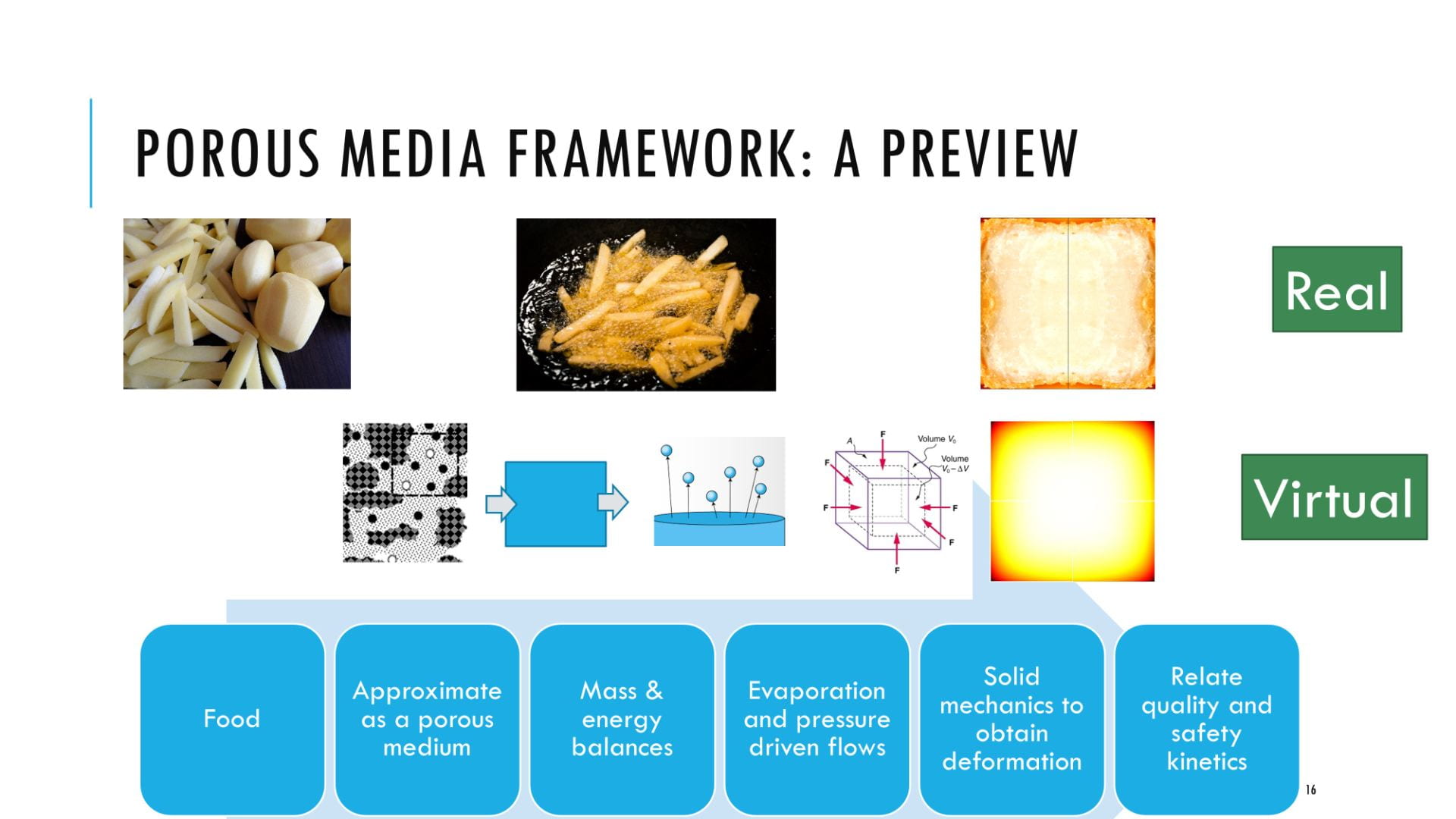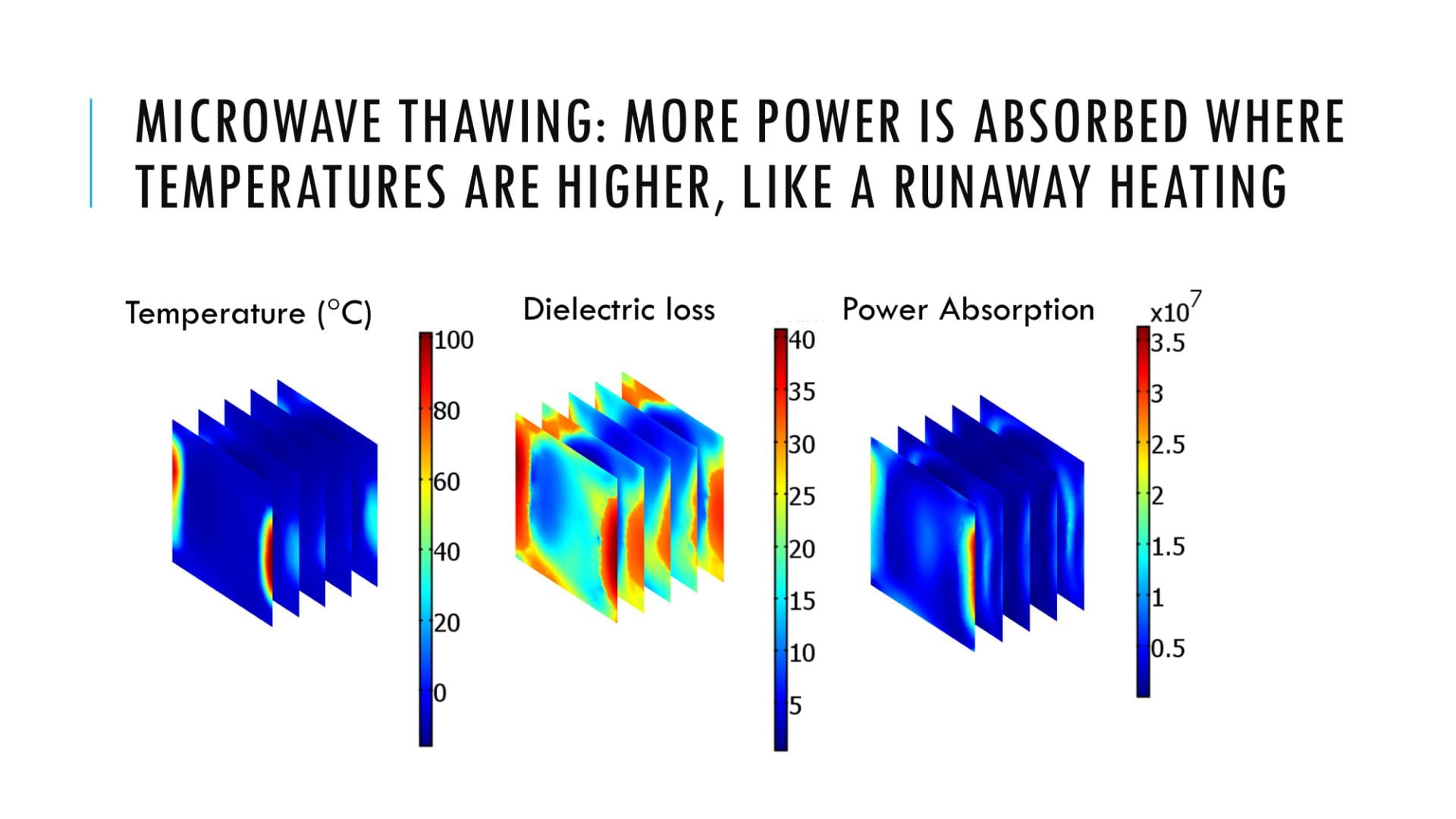We are active in three areas–computer-aided food engineering, food physics, and microwave processing, as can be seen in our complete list of publications.
| What is food physics? Broadly speaking, it is anything describing physical (as opposed to microbiological or chemical) changes in the food during production, processing, storage, transportation, and consumption. In reality, chemical and microbiological changes are also included as long as we can describe them using equations, i.e., quantitatively.
In food physics, our group has built a universal multiphysics framework for understanding and optimizing food processes; not just one particular food but most solid foods. Here food is treated as a deformable (swellable/shrinkable) porous medium where multicomponent transport (water, vapor, oil, flavors, etc.), evaporation/condensation, and reactions take place. The framework is particularly useful in building computer models for complex food processes that facilitate a comprehensive understanding and the use of “what if” scenarios to achieve optimization and design sensitivity. |
 |
| In microwave processing, our group developed some of the first comprehensive, multiphysics models of microwave heating in an oven by including electromagnetics, heat transfer, and moisture transfer. We showed for the first time, mechanistically and quantitatively, how the size, shape, properties, and placement of food affect its uniformity of heating in a microwave oven. Our group provided the most elaborate and comprehensive insights into the most complex of the microwave food processes—thawing, drying, and puffing. |  |
| Additionally, in Computer-Aided Food Engineering, we are developing enabling technologies for doing rapid “what if” scenarios in a design context. We are building reduced-order models (e.g., neural network models derived from mechanistic model results described under food physics) of food processes that make a rapid simulation of complex food processes possible. To complement this effort, we are building a food properties knowledge base that can estimate the properties of an unknown food with little effort. |
